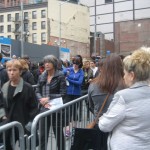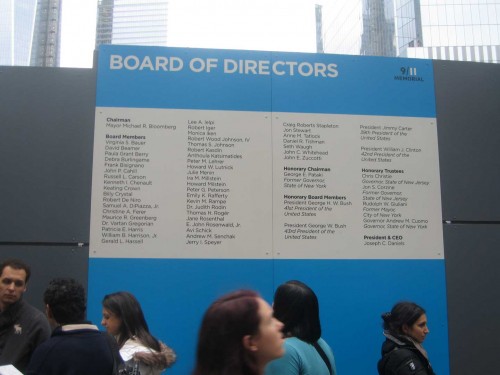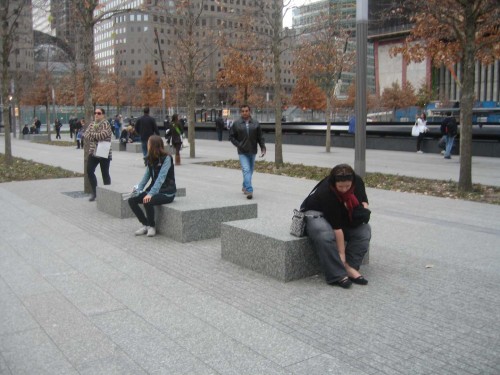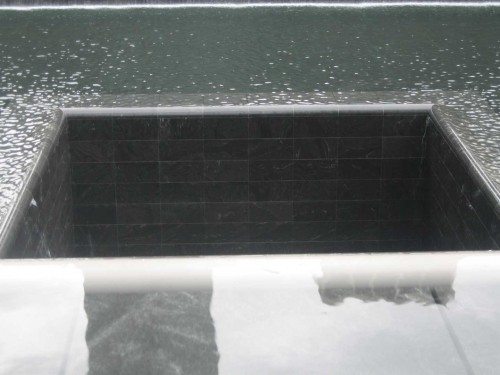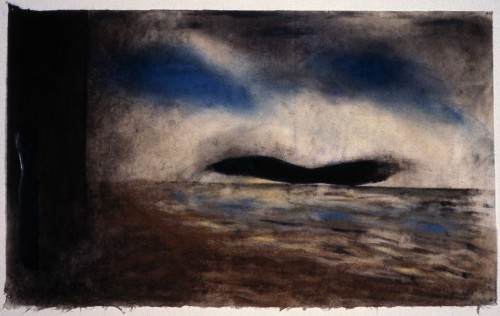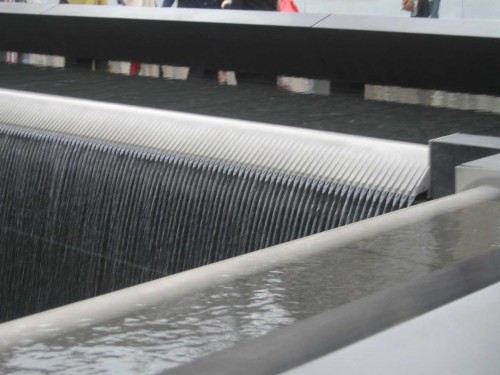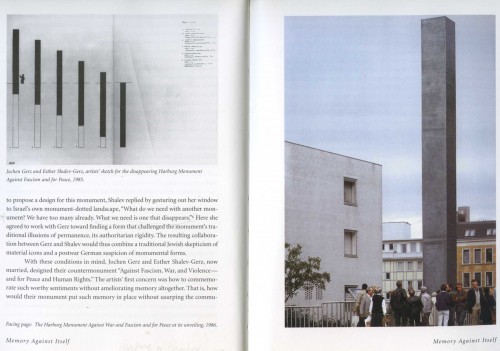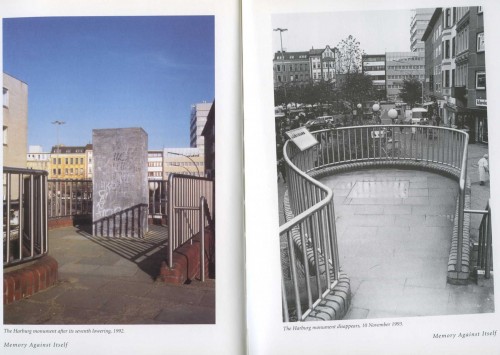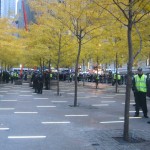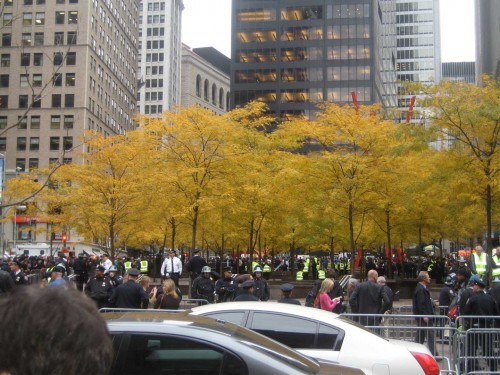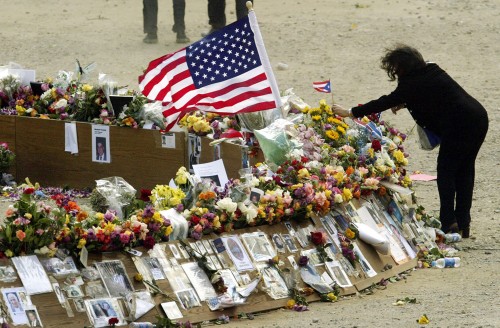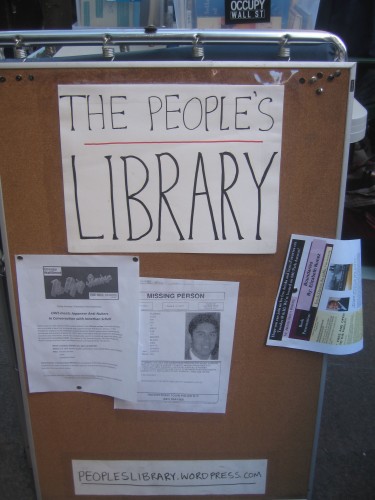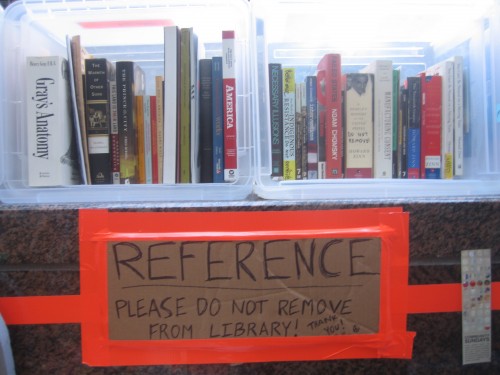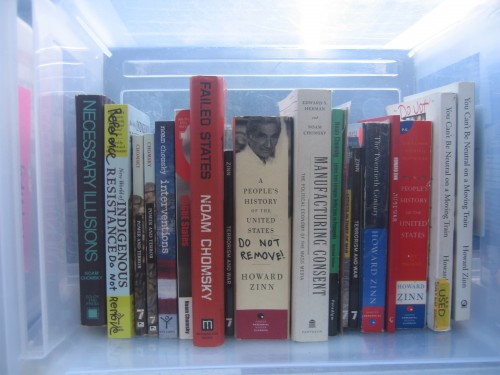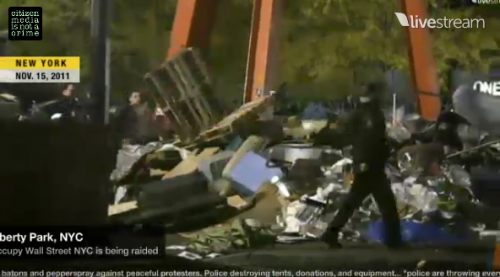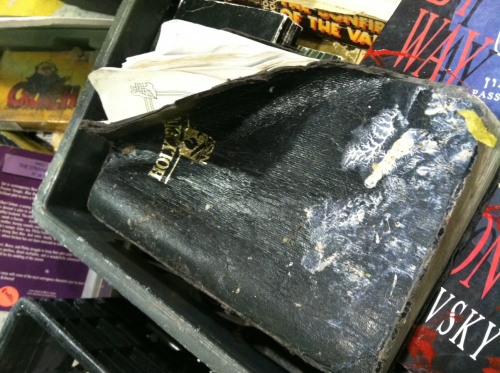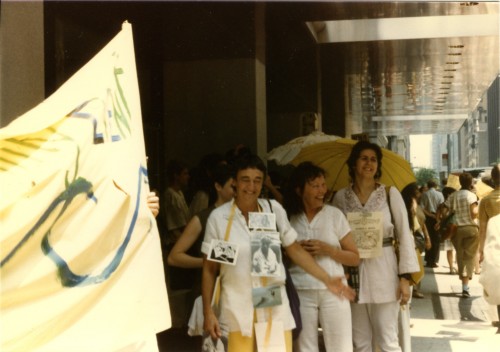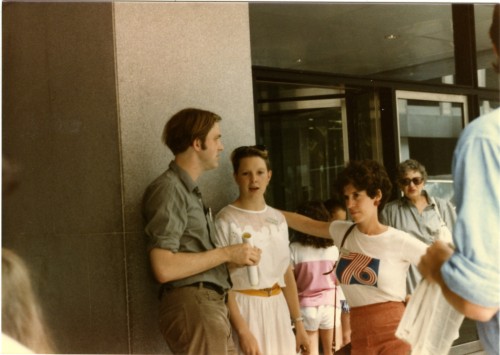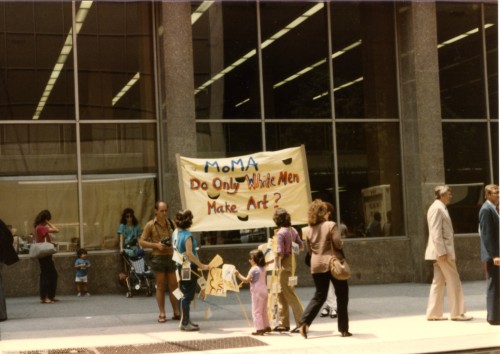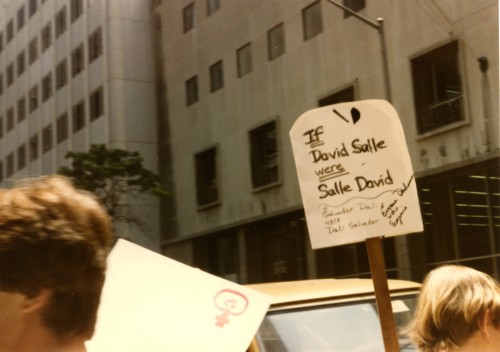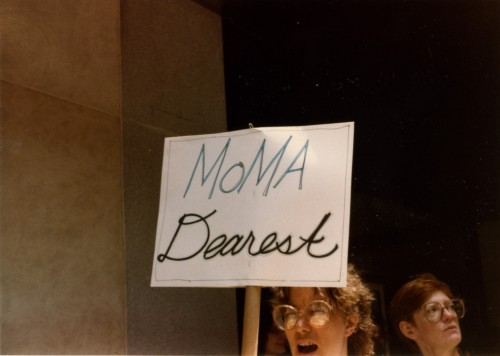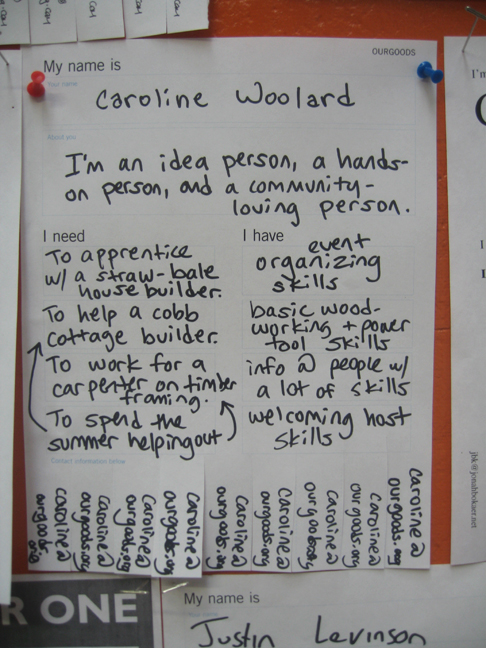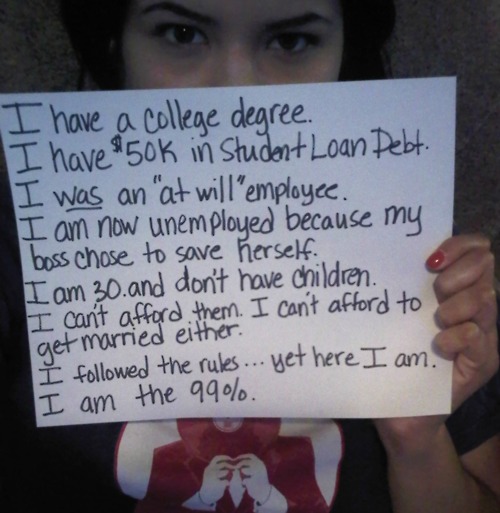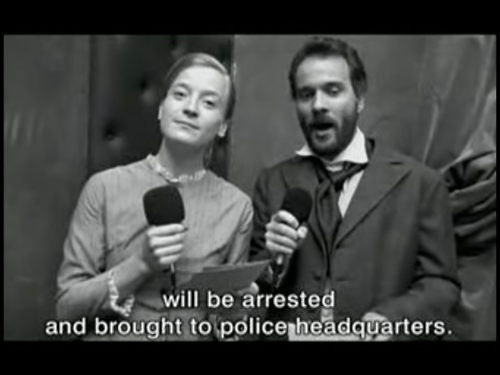During his excellent and self-confessedly pessimistic lecture at yesterday’s 2012 Creative Time Summit, held at the NYU Skirball Center for the Performing Arts, Slavoj Žižek urged the audience to see The Act of Killing, a recent documentary about atrocities committed during the 1965 anti-communist purge in Indonesia, and how some of the men responsible for the killing, imprisonment, and torture of perhaps as many as two and half million people (the figure I think given by Žižek) have not only never been prosecuted for war crimes or crimes against humanity, but are in fact celebrated and successful public figures. In a telling example from the film, as related by Žižek, some of the men are seen appearing on a talk show in which they openly boast about what they did to a young woman moderator who asks one of them, “When you had to torture the prisoners what approaches did you take?” He relates in detail how they figured out the best way to torture someone was by raping his female relatives in front of him, going into great detail on the most effective methods they devised to restrain, torture, and rape these women. The young lady moderator then says, “Amazing, let’s give Mr. (Anwar?) a round of applause.”
“Amazing,” an obscenity! However this anecdote was also amusing–squeeze some lemon on that word and salt it as well, of course–because the Creative Time Summit’s first day was marked by a relentless positivism embodied in its chosen style of presentation, a style derived from the equally relentlessly positivistic and corporatized TED Talks: in this format speakers are expected to be able to condense their work into a short and inspiring talk preferably not speaking from any notes and delivered through a wireless mike so that you can move freely and energetically around the stage. The word “amazing” was used liberally, notably by the organizers. Many of the speakers were indeed AMAZING but it is a crucial semiotic point that this style and format, enabled and dictated by the available technology, comes to the university and art world from the corporate world, in the Steve Jobs super salesmanship genre, thus they carry political DNA from these sources while other methods of presentation and thus of knowledge and political valence are suppressed. It makes one quake in one’s boots to think about Derrida, Foucault, or Lacan, under the Darwinian imperative to adapt, learning how to package their message in such a manner though maybe, clever fellows all, they too would have gotten with the program.
So the current cultural imperative is that you have to speak within the corporate salespitch format about some “amazing” thing you have done to prove that the world can be made a better place, unlike Žižek who introduced his talk by saying “You won’t get good news from me.”
Creative Time Director Nato Thompson cast himself in the part of Jimmy Fallon or perhaps a rather more 1960s style of exuberant game show host, and the audience was relentlessly encouraged to use social media and tweet the hell out of the event, which was being livestreamed and followed on Twitter, in fact after two of the short breaks in the proceedings a young woman (wirelessly miked of course) came out to read some of the tweets, which apparently were mostly commentary on what Nato was wearing. Only one fellow from Armenia was quoted as Tweeting that the conference was taking place and was being live-streamed. The AMAZINGness of instant interconnectedness was somehow muted for me since though a fairly indefatigable Facebooker, as so often happens at events that cruise on their technological sophistication, in the auditorium my iPhone could not get onto any of the so called free wi-fi networks labelled NYU this or that, my 3G connection was crappy, and my battery began to run low: the very elegant new auditorium should really have electrical outlets next to every seat, even the Peter Pan, Bolt, and other bus lines offers better wi-fi and plugs to their patrons these days. Why not just acknowledge that everyone these days is paying at least 50% attention to their iPhones while they are studying or teaching, working, walking, mothering, or at the theater, since doing everything private in public, thereby losing the true meaning of the public realm, was one of Žižek’s primary themes, aborted by the walk-off drumming that people started booing>OK some people are bores, time has to be controlled when there are multiple speakers, but this time around Žižek had promised us a semi-positive ending, which we never really got, and maybe that’s really the whole point, despite the predominance of the word AMAZING used by many of the presenters, not the artists I hasten to add, but by the Creative Time team.
The tone of the affair and the style of presentation was in significant contradistinction to a numbers of important presentations and events. First and let’s get it out of the way, two presenters, Hip hop artist Rebel Diaz and Cairo-based art collective Mosireen, had pulled out of the event at the last minute to protest that an Israeli organization was listed as one of the affiliated supporters of the event. The audience listened to reports and some commentary from presenters about these cancellations mostly in a silence that I could not possibly interpret other than my own reasons for it–a silence I must maintain because it is such a painful subject in which political realism of one kind, Israeli policies towards the Palestinians that I along with many Israelis find hard to countenance, meets political realism of another kind, which is the much more complex political history of the area and the real threats to Israel that cannot be denied, meets political realism of yet another kind, which is my own preternaturally calibrated sensitivity to any burgeoning under-any-other- name of antisemitism, meets political realism of yet another kind, which is that peer pressure is enormous to agree with the boycott, as yesterday, among many, artist Michael Rakowitz began his presentation by saying, “I’m a Jew, from Great Neck [Long Island], and I support the boycott of Israel and Israeli institutions.” A number of bloggers immediately got on the case–I can’t write or think that fast so here is Hyperallergic editor Hrag Vartanian’s report from yesterday thus in actual time on some of the details, and some artists including eco-artist Aviva Rahmani on Facebook commented on the group think and the lack of serious discussion around this announcement.
Today @ the Creative Time Summit, there was a lot of attention to a couple artists & their supporters who absented themselves in protest because they are endorsing the cultural boycott against Israel and an Israeli cultural group has been a CT partner. The boycott pre-empted, for me, attention to some wonderful artists doing wonderful work, such as Fernando Garcia-Dory, or the pleasure of visiting with old presenting friends, like Martha Rosler, Suzanne Lacy or John Malpedes. I just wrote Nato a protest letter about the lack of framing for this critical discussion and my concern that this would take over events planned for tomorrow. Personally, I profoundly deplore targeting artists because their governments have adopted unacceptable policies. If that were carried to the ultimate conclusion, no artists could ever speak to any other artists. But there is also the issue of conflating policies and peoples and how that invites, in this case, anti-semitism and ultimately, legitimizes Neo-Nazi behavior. Despite many wonderful presentations, such as Tom Finkelpearl or Laura Poitras, it was a disappointing experience of social justice practice.
According to Rahmani, in response to the protest, Creative Time “deleted the Israeli partner and took down the page of their supporters from their website. The streaming map deleted Israel.”
Afternoon keynote address speaker Tom Finkerpearl’s comments were as troubling as the cancellations, the boycott, and Creative Time’s scrubbing of Israel off the live-stream map. He said that though he admired these artists’ having the cohones (my words, not his) to cancel at the last minute, it was “bad for their career” (or did he say, “even if it was bad for their career”) and that “if you boycott Creative Time, where can you go?” I’m afraid I said out loud, “that’s ridiculous,” though I regret to say not out loud enough to be heard across the hall. Why ridiculous? Well, first because speaking both cynically but realistically, I can’t think of a better career move than to get some notoriety by taking a widely held political position favored by the elite of the hippest part of the global artworld as represented by Creative Time, without actually showing up to show your work and espouse your protest publicly with some accountability, not to mention that for the Cairo-based group, it is also not only a matter of belief but of political safety. But most ridiculous because the world of political activism that Creative Time and Nato Thompson specifically embrace is the world in which Occupy Wall Street and other groups internationally, including some represented at the event, such as artist/activist Leonidas Martin, are trying to critique the global corporate culture we all live in and are subject to. Such a critique might include a critique of the elitism that is intrinsic to any such meeting at the heart of the artworld, and one held at an educational institution, New York University (my Alma Mater, at a time when, by the way, it wasn’t that big or fancy or RICH a place) which has seen its share of criticism for its enthusiastic embrace of global capital, including its recent plans for the destruction of the very neighborhood it exists in. Are we holding a gun to political artists’ heads and saying, hey, bud, it’s Creative Time, or a one way ticket to Palookaville? That viewpoint sort of seems a bit neo-liberally arrogant.
The Creative Time Summit cost $65 including online fee for the one day I signed up for, and in a moment of cheapness brought about by the immediate effect of sticker shock at that $65, I had decided to skip the lunch offered, to be held at Judson memorial church–little realizing it was also an artwork,a sort of pedagogic political meal created by Conflict Kitchen, a take-out restaurant that only serves cuisine from countries with which the United States is in conflict–with the temporary result that as all my friends streamed into Judson Memorial Church, great refuge of the needy, I found myself standing outside temporarily nearly in tears at the economic (self-) exclusion, while painfully and belatedly aware that of course I would have to spend as much on any lunch in the neighborhood. [Personal note, lest anyone worry too much, all’s well that ends well, I did spend the same amount, but in the company of some really nice and interesting young people I ran into and was glad to talk to.]
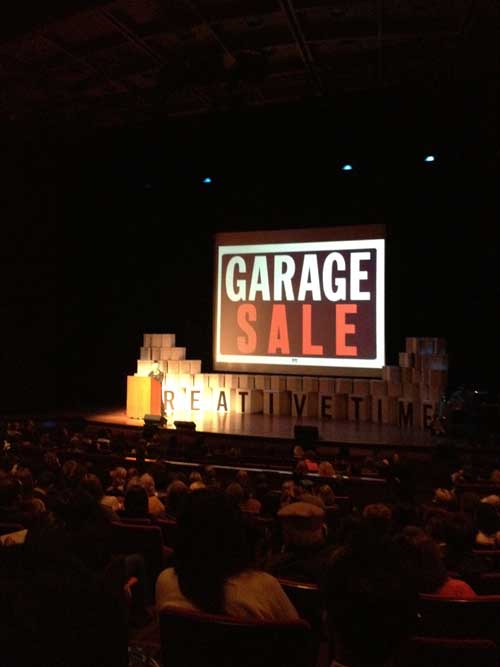
Martha Rosler’s talk also raised, or rather did and didn’t raise, the question of the Summit’s relation to capital: she noted the irony that admission to the next incarnation of her on-going project, Garage Sale, forthcoming at MoMA, would cost up to $25 for those visitors to the museum who are not members. Since there were no audience questions at the Summit, one could only wonder why Rosler, who would have the cultural clout to do so, did not insist that admission be free to the museum during the time of her show, or, for example, since that would affect too high a percent of the museum’s admission fee income for two weeks, that anyone who participated in the Garage Sale by purchasing anything would get their admission refunded. How’s about that?
It’s not that alternatives to these situations aren’t happening all over the city and the world, small meetings in donated spaces that are happening probably every day here in New York City, where conversation follows the Occupy model or the standard panel model + audience participation–this event had no mikes set up in the aisles for audience response or questions, although a second day, today, allowed one to participate in smaller groups with some of the same participants–events where no one is paid and you fork over your dollar or so to help defray the cost of the beer. The point is, the 99%, the 47%, the struggling Occupy movement, and also the poverty of imagination of what could be the alternative to contemporary global capitalism that was addressed by Žižek, all seemed like fashionable shadows within the viewpoint of Creative Time as presented by some of its leaders and by the corporate-influenced presentational model it espoused.
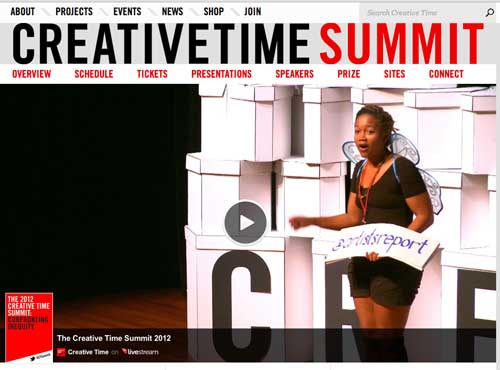
Given all of these issues, having Tweets about Nato’s pants read out loud to us was one huge insult to our intelligence and situation.
In fact all this positivistic cheerleading was in significant contradistinction to the very interesting social subject matter brought into the space by many of the speakers and I would be remiss if I did not report on some of the highlights.
Going down my program in order, I was immensely impressed by the speakers who formed part of the first group, “Inequities,” including Malkia Cyril of the Center for Media Justice, a very forceful public speaker; the work of the Belgrade-based collective Škart organizing choirs composed of anyone who responded to the call for an audition even if they had never sung in their life, the project’s focus on small communities made me think of the deeply moving power of close group folk singing, as one hears on archival recordings from the American South and as I once witnessed at a fest-noz in a small town in Brittany in the early 80s. Hito Steyerl gave an elegantly resonant talk, “Is the Museum a Battlefield,” tracking her research for a work about the debris of war found in a museum back to where they were made and produced, finding herself in various corporate headquarters that all seemed to be designed by Frank Ghery, and eventually, in a circular process (literally making a circle with her hands for the feedback loop), finding that her research into the source of a General Dynamics bullet led to a corporate headquarters housing her own art work.
There were a number of feminist interventions: Jodie Evans of CODEPINK and artist and activist Suzanne Lacy brought important examples of the recent feminist history of artwork about rape and called attention to the very important Women Under Siege Project. It was great to get to see a bit more footage of Pussy Riot, presented by artist and activist A.L. Steiner, dressed only in a transparent neon orange plastic jumpsuit, her body in revelatory bright lighting, her face in shadow. On the feminist email list-serve Faces there had been a certain amount of criticism of the feminism of Pussy Riot by some Eastern European feminist artists, on the other hand there has been a lot of publicity about them without necessarily more detailed awareness of their political views and I found myself very moved by being able to see some more of what they did, by the images of them performing in the church and on the wall of a snow covered redoubt in a huge square near the Kremlin. Steiner’s presentation echoed the daring and the vulnerability of Pussy Riot, pointing to what individual women face when they try to project their bodies and voices into a huge and mostly unreceptive to downright hostile world, here embodied in the artist’s presence, strongly confrontational yet riskily exposed, and in the way her mic check style call and response of feminist statements was absorbed and dampened by the hall’s acoustic environment, highlighting its deficit in terms of the spatial and auditory intimacy required for shared political purpose.
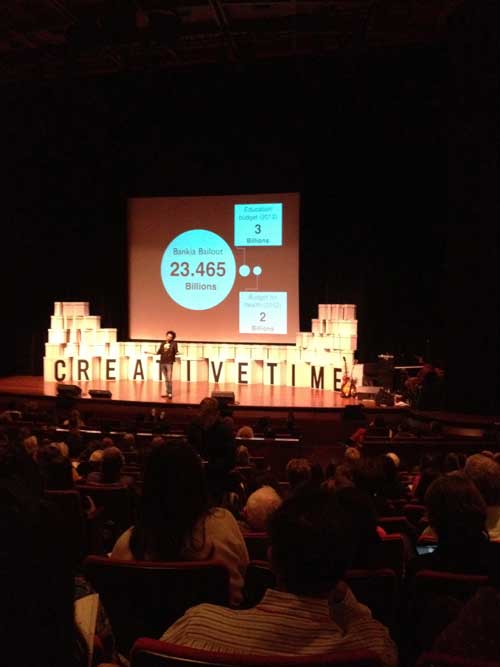
On the other hand the raucous humor of the various projects depicted by Barcelona based artist and activist Leonidas Martin was quite wonderful and contagiously funny although one of the best pieces was video of a bank occupation, when in a kind of flash mob event, people closed their accounts at a branch of a major bank and a huge crowd of revelers suddenly materialized, eventually even making an initially stunned woman banker burst out laughing. Humor is one of the most powerful and effective political weapons, so, one wondered, why couldn’t we do that here: unfortunately when that tactic was tried last year in New York at a Citibank branch a block down from NYU’s Skirball Center, the police arrived and arrested a bunch of activists as well as possibly innocent by-standers although the Occupy activists had purposefully dressed in business attire so it was a little hard to tell, but the hilarity of the Spanish scene was preemptively aborted.
However, if I close my eyes and think of the most interesting artwork I saw, without question one work stands out, and, perhaps significantly the artist was not there, only the artwork. This was Shooting Images, (or was the title Double Shooting? I wrote both down) a video presentation by Lebanese stage and film actor, playwright, and visual artist Rabih Mroué, taking as its premise the phenomenon recently noted in Syria of citizen journalists shooting their own deaths, often on their smart phone cameras. The video is extremely simple in its means, starting with its means of address: the artist uses white on black titles with the text in relatively small type to address us, speaking in the first person. Mroué established the double shooting: the double shooters: the gun and the camera. The photographer is always “hors champs” a film term for off camera, but I believe based on a military related term for off the field of battle, like “hors combat.” Mroué first presents the scene in such a way that it appears to be real footage, the sniper and the man with the camera, whose end is nearly identical with actual documentary footage from the past few months. Then he clarifies very specifically and intimately that this is a re-enactment he created with a friend and neighbor–the insistence on this at the end of the video I think is a commentary on the tragedy of a civil war where friends and neighbors may shoot one another. The video asks if there is a way to bring the victim into the frame, in the killer’s eyes? In a fascinatingly medium specific way he magnifies the sniper’s image until, within one pixel, is the image of the cameraman/victim, upside-down in the retina of his killer. Then the bond of the reciprocal homicidal gaze bounces back and forth between the two protagonists. The discovery of the victim’s face in a single pixel detail of the killer’s eye reverses a recurring theme of murder mystery novels and movies, the idea that what the murder victim last saw would be fixed upon his retina, a reverse image of the murderer, like an internal still CCTV image capture. This was a memorable work.
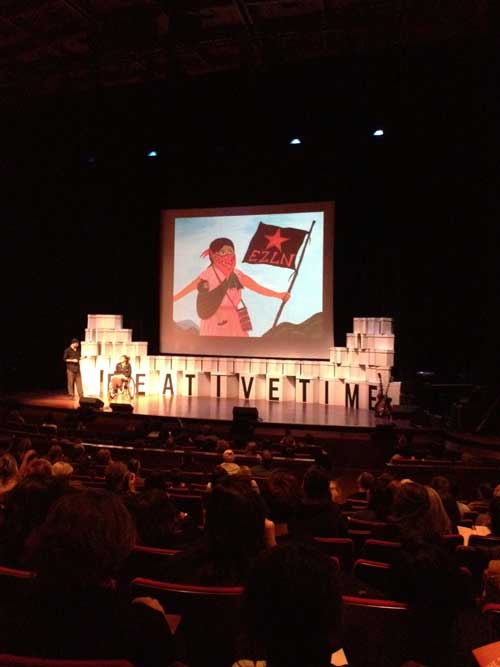
The question of medium specificity is important to me partly because my own visual medium, painting, typically does not appear at such events dedicated to art of social engagement except in the guise of third world or inner city folk art, for example in the presentation by the Indonesian activist group Taring Padi and in some images that were shown by Mexican art and social activists EDELO, among many very intriguing and suggestive works including theater pieces and contingent folk sculpture. The politics of this double standard is rarely discussed.
I left at 5 because I wanted to get home to write about the exhibition of Josef Albers Paintings on Paper, an exhibition at the Morgan Library closing this weekend–in that decision were multiple ironies, that I was leaving a fashionable art event inimical to painting in order to write about an artist who in fact I had always seen as didactic in a way that could be seen as part of the repressive politics of high modernism which contributed to my move towards feminism as a young artist. It’s probably not a good political move to have your feet planted in two arenas, the powers that be that have a stake in each may not appreciate the dual vision, but to me it is a more total and enriched position.
There is political art and there are also art politics, and by politics I mean not just specific political histories and narratives but in general hierarchies and systems of power and privilege. Part of any political practice is to understand a field of action and to be able to hold in your head at least two things at the same time, that something can be very interesting, important, AMAZING even, and also occasionally problematic, with its internal power structures, which are often obscured. One always has to keep this in mind, which by the way is very different than dismissing it outright, and this is the purpose of this small intervention on my part into what was a very interesting and instructive event.
*
The presentations I’ve discussed above are now online (scroll down the site for individual presentations mentioned here) although it is important to point out that what you see online spatially and relationally to the original audience in the Skirball Center is the TV show view, with speakers seen in close up as well as occasionally in long shot, rather the audience’s theatrical experience of the speakers as small and less distinct figures on a large and, for many there, distant, stage. In lieu of a comments section here, see the contentious, interesting discussion which took place over a three day period on my original Facebook posting of this piece.

